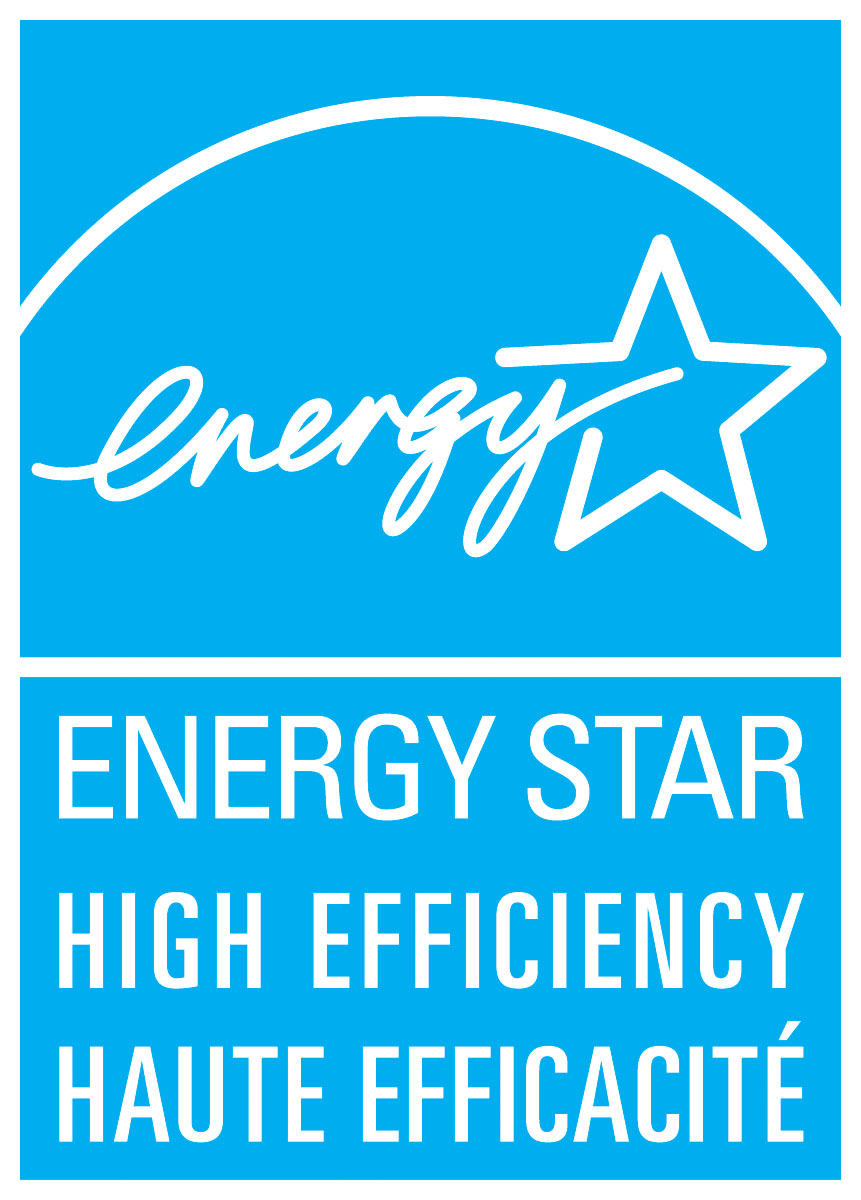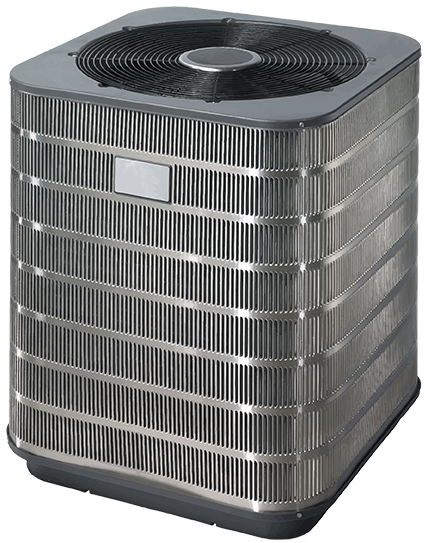Central air conditioners

Buy ENERGY STAR® to save you money!
An ENERGY STAR certified central air conditioner (A/C or “central air”) uses 8% less energy, on average, than a standard model. Central air conditioners that have earned the ENERGY STAR Most Efficient designation are the best of the best – they’ll save you even more energy.
It is important to remember, though, that replacing an air conditioner that is over 10 years old can easily save you upwards of 30%. Saving energy saves money and reduces your carbon footprint.
Two kinds of systems
A central air conditioner evaporates a liquid refrigerant to absorb heat from your home. The system then compresses the refrigerant and condenses it from a vapor to a liquid, releasing the heat so that the cooled/liquid refrigerant can be expanded and sent back into the home, where it starts the cycle again. There are two types of central air conditioning systems to choose from, depending on your budget and your home’s existing heating and cooling products, and duct work:
- Split systems: These have an outdoor cabinet which compresses and condenses the refrigerant, releasing heat outdoors. The indoor cabinet expands and evaporates the refrigerant, absorbing heat. If your home already has a furnace, a split-system is the most economical central air conditioner to install.
- Packaged central air conditioning system: In this system, all of the components are located in one cabinet; usually placed on a roof or on a slab next to the house's foundation. Ducts go through the home's exterior wall or roof to connect with the air conditioner outdoors. Packaged air conditioners often include electric heating coils or a natural gas furnace, eliminating the need for a separate furnace indoors.
How to find ENERGY STAR certified central air conditioners

The benefit of ENERGY STAR is its simplicity. Purchasing an efficient central air conditioner is as easy as asking your retailer, installer, or service delivery agent for an ENERGY STAR certified product. Or find one using one of these links:
- Use the advanced version of ENERGY STAR Product Finder to access the “ENERGY STAR Certified Non-AHRI (Air-Conditioning, Heating and Refrigeration Institute) Central Air Conditioner” directory. (NOTE: you will be redirected to an English-only database on the U.S. ENERGY STAR website.)
- You can also use the (English-only) Consortium for Energy Efficiency / Air-Conditioning, Heating and Refrigeration Institute directory (make sure you select either “Split” or “Packaged” under “product type”, and “Yes” under “labeled ENERGY STAR”).
Heat pumps with a reverse-cycle feature can be used for air conditioning as well as space heating. Find more information on air-source and ground source heat pumps.
Helpful tips
- Remember that bigger is not always better! Buying an air conditioner that is too large does not provide better cooling. An oversized air conditioner is actually less effective — and wastes energy at the same time. Make sure your unit is properly sized by a certified air conditioning contractor to be sure.
- When buying an air conditioner, there are two ratings that will help you determine the unit’s efficiency: the Seasonal Energy Efficiency Ratio (SEER) and the Energy Efficiency Ratio (EER). The higher the each number, the better the efficiency.
- Aim for comfort, not chill. The recommended temperature is between 25 and 27°C.
- Keep your system clean – regularly clean filters, coils and ductwork to make sure it’s running as efficiently as possible. Consult your owner’s manual for detailed instructions.
- To maintain optimal performance, get your central air serviced every year by a qualified HVAC contractor.
- Learn more in our booklet, Air Conditioning Your Home
Installation tips
- A good fit improves unit performance
- Hire a professional - a qualified air conditioning contractor is specially trained to assess a home's cooling requirements and identify the right size air conditioning unit. The contractor makes this calculation based on factors such as home size, insulation levels, existing furnace and ductwork, electrical capacity, and the number, type and orientation of windows.
- Location, location, location - a central air conditioning unit needs adequate air circulation. Locate the outdoor unit or condenser away from shrubbery and out of direct sunlight. Choose a spot where the noise will be least troublesome for you and your neighbours.
- Stay on the level - in new construction, consider installing the central air conditioning unit on a frame mounted to the home. Doing so will ensure the unit stays level as backfill around the home's foundation settles.
- Keep refrigerant lines as short as possible - where the lines pass through the outside wall, pack the gap between the lines and wall with a resilient material, such as plumber's putty. This will prevent noise or vibration problems and air leaks.
- Always match the coil to the unit - when replacing an existing central air conditioning unit, replace the current indoor coil with one matched to the new outdoor unit. If the coil is not replaced, the new unit will not operate at its rated efficiency.
What’s in a label?
Central air conditioners in Canada can have two labels:
- The ENERGY STAR symbol means the model is highly energy efficient.
 The voluntary EnerGuide label shows the model’s energy consumption and how it compares to similar models.
The voluntary EnerGuide label shows the model’s energy consumption and how it compares to similar models.
Learn more about EnerGuide labels.
The ENERGY STAR Promise
All ENERGY STAR certified products are tested to meet strict efficiency specifications and are certified by an independent third party. They perform the same as or better than standard products without compromising performance in any way.
Regulations set the energy efficiency minimum
Central air, room and large commercial air conditioners are subject to Canada's Energy Efficiency Regulations, which set a minimum performance standard for their energy efficiency. Find details in the Guide to the Regulations.
The ENERGY STAR name and symbol are trademarks registered in Canada by the United States Environmental Protection Agency and are administered and promoted by Natural Resources Canada.
Page details
- Date modified: